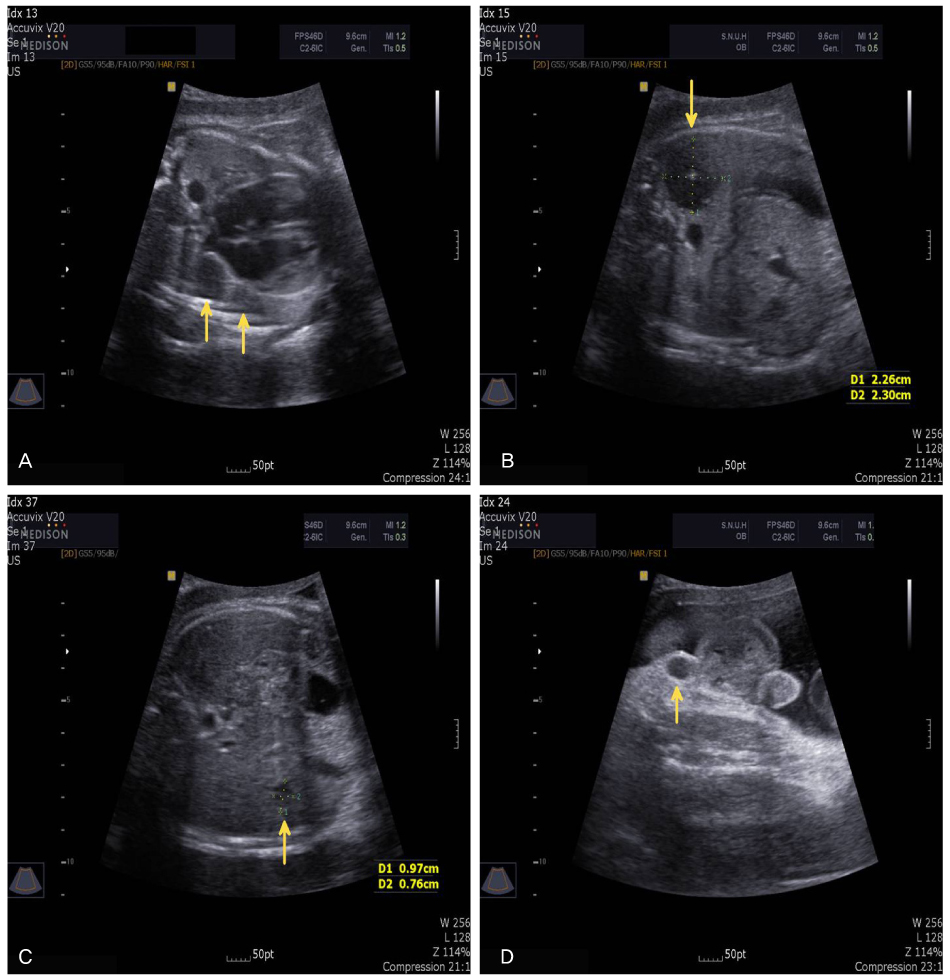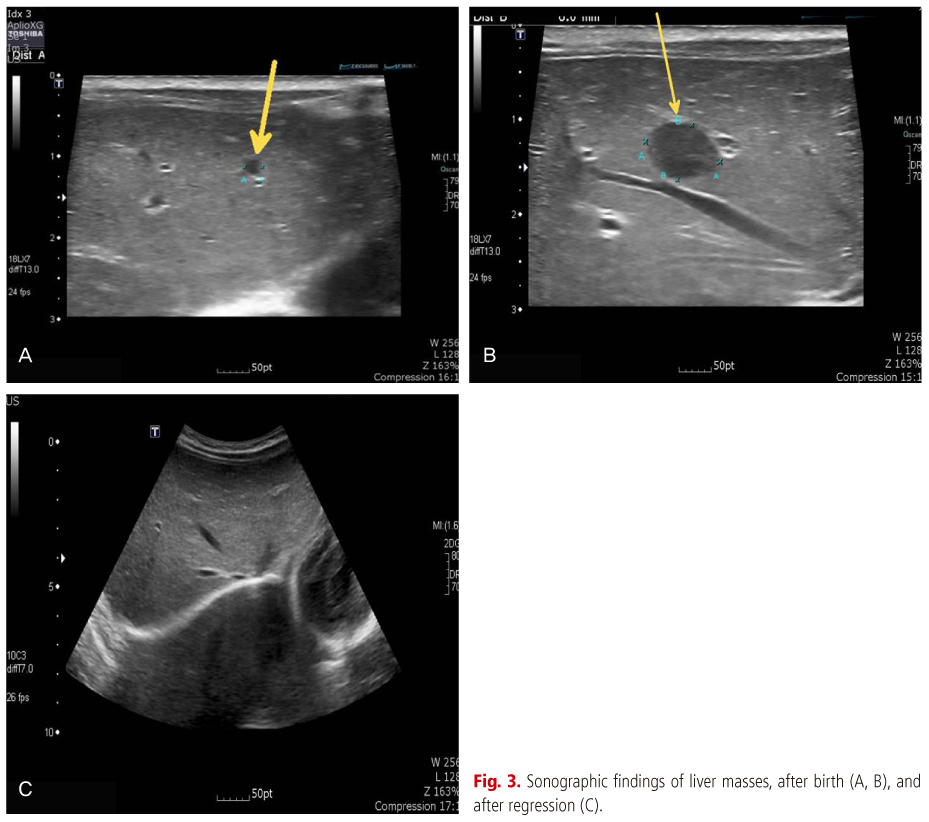Korean J Obstet Gynecol.
2012 Oct;55(10):756-760.
A case of juvenile xanthogranuloma involving skin and multiple systemic organs in a fetus
- Affiliations
-
- 1Department of Obstetrics and Gynecology, Seoul National University College of Medicine, Seoul, Korea. jsparkmd@snu.ac.kr
Abstract
- Juvenile xanthogranuloma is a benign histiocytic proliferative disorder. It typically presents as a solitary, benign, rapidly growing cutaneous tumor that may regress spontaneously. Most of juvenile xanthogranuloma occur in infants and young children. We had experienced a case of juvenile xanthogranuloma in a fetus which involves multiple systemic organs. On prenatal ultrasonography, the fetus presented with pulmonary, perineal and hepatic nodules. The neonate was diagnosed with juvenile xanthogranuloma by the cutaneous and perineal nodule biopsy after birth. The neonate outpatient follow-up shows spontaneous regression without specific treatment. So we report a case with a brief review of the literature.
MeSH Terms
Figure
Reference
-
1. Tahan SR, Pastel-Levy C, Bhan AK, Mihm MC Jr. Juvenile xanthogranuloma. Clinical and pathologic characterization. Arch Pathol Lab Med. 1989. 113:1057–1061.2. Freyer DR, Kennedy R, Bostrom BC, Kohut G, Dehner LP. Juvenile xanthogranuloma: forms of systemic disease and their clinical implications. J Pediatr. 1996. 129:227–237.3. Dehner LP. Juvenile xanthogranulomas in the first two decades of life: a clinicopathologic study of 174 cases with cutaneous and extracutaneous manifestations. Am J Surg Pathol. 2003. 27:579–593.4. Sonoda T, Hashimoto H, Enjoji M. Juvenile xanthogranuloma. Clinicopathologic analysis and immunohistochemical study of 57 patients. Cancer. 1985. 56:2280–2286.5. Zelger B, Cerio R, Orchard G, Wilson-Jones E. Juvenile and adult xanthogranuloma. A histological and immunohistochemical comparison. Am J Surg Pathol. 1994. 18:126–135.6. Janney CG, Hurt MA, Santa Cruz DJ. Deep juvenile xanthogranuloma. Subcutaneous and intramuscular forms. Am J Surg Pathol. 1991. 15:150–159.7. Schultz KD Jr, Petronio J, Narad C, Hunter SB. Solitary intracerebral juvenile xanthogranuloma. Case report and review of the literature. Pediatr Neurosurg. 1997. 26:315–321.8. Nakatani T, Morimoto A, Kato R, Tokuda S, Sugimoto T, Tokiwa K, et al. Successful treatment of congenital systemic juvenile xanthogranuloma with Langerhans cell histiocytosis-based chemotherapy. J Pediatr Hematol Oncol. 2004. 26:371–374.9. Hu WK, Gilliam AC, Wiersma SR, Dahms BB. Fatal congenital systemic juvenile xanthogranuloma with liver failure. Pediatr Dev Pathol. 2004. 7:71–76.10. Takeuchi M, Nakayama M, Nakano A, Kitajima H, Sawada A. Congenital systemic juvenile xanthogranuloma with placental lesion. Pediatr Int. 2009. 51:833–836.11. Papadakis V, Volonaki E, Katsibardi K, Stefanaki K, Valari M, Anagnostakou M, et al. A rare case of neonatal systemic xanthogranulomatosis with severe hepatic disease and metachronous skin involvement. J Pediatr Hematol Oncol. 2012. 34:226–228.
- Full Text Links
- Actions
-
Cited
- CITED
-
- Close
- Share
- Similar articles
-
- A Case of Multiple Juvenile Xanthogranuloma with Involvement of the Glans Penis
- A Case of Juvenile Xanthogranuloma Localized in Papillary Dermis
- A Case of Subcutaneous Juvenile Xanthogranuloma
- A Case of Xanthogranuloma in an Adult
- A Case of Multiple Xanthogranuloma Similar to the Histopathological Findings of Malignant Melanoma




